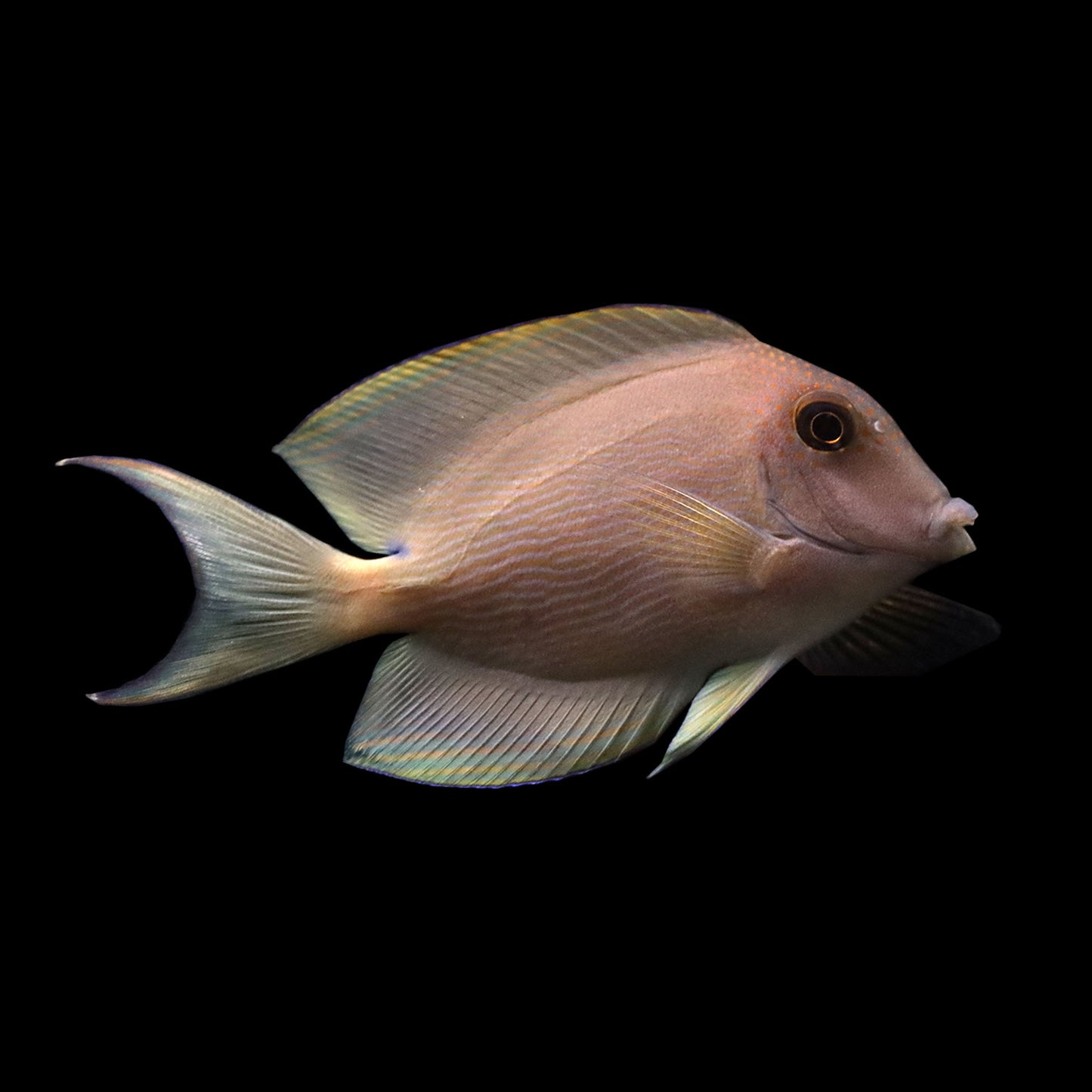AQUARIUM ARTS
Orange Striped Bristletooth Tang (Ctenochaetus striatus)
Orange Striped Bristletooth Tang (Ctenochaetus striatus)
Couldn't load pickup availability
Orange Striped Bristletooth Tang (Ctenochaetus striatus)
Discover the Vibrant Orange Striped Bristletooth Tang
The Orange Striped Bristletooth Tang, also known as the Striated Surgeonfish, is a stunning and hardworking fish known for its unique appearance and algae-eating abilities. This active and peaceful species is a fantastic choice for aquarists seeking to add a touch of beauty and functionality to their saltwater aquarium. With their distinct orange stripes and helpful grazing behavior, these tangs bring both aesthetic and practical value to any marine tank.
Appearance: The Orange Striped Bristletooth Tang features a sleek, oval-shaped body with a beautiful grayish-brown hue adorned by horizontal orange stripes running across its sides. Its bristle-like teeth, used for scraping algae off rocks and surfaces, give this species its name. The contrast of the vivid orange stripes against the dark body, along with the fish’s subtle blue accents on the fins, makes this tang a visually captivating addition to any aquarium.
Behavior: Known for their peaceful temperament, Orange Striped Bristletooth Tangs are generally calm and get along well with a variety of tankmates. They are active grazers, constantly foraging for algae on rocks, substrate, and aquarium walls. This natural behavior helps maintain the cleanliness of the aquarium by controlling algae growth, making them not only beautiful but also highly beneficial to the tank ecosystem.
Diet: Orange Striped Bristletooth Tangs are primarily herbivores and thrive on a diet rich in marine algae. In addition to naturally grazing on algae within the tank, they should be provided with supplemental foods such as seaweed sheets, spirulina, and other plant-based flakes or pellets. Occasionally, they can be offered frozen foods like brine shrimp or mysis shrimp for variety. Regular feeding ensures their vibrant coloration and overall health.
Tank Requirements: Due to their active nature, Orange Striped Bristletooth Tangs require a minimum tank size of 70 gallons, with plenty of live rock for grazing. These fish are constantly moving and exploring, so providing ample swimming space and hiding spots is essential. A well-maintained aquarium with stable water parameters and a good supply of algae will keep them thriving.
Tankmates: Orange Striped Bristletooth Tangs are generally peaceful and can coexist with a wide variety of other non-aggressive fish. Suitable tankmates include clownfish, gobies, wrasses, and other tangs. However, if housing multiple tangs of the same genus, it's important to introduce them all at the same time to minimize aggression. This fish can be kept with other tangs of the same genus. It is advisable to introduce them all at the same time to an appropriately sized aquarium, usually 5 feet or longer. Ensure that algae and other food are not lacking to minimize aggression problems.
Reef Aquarium Compatibility: The Orange Striped Bristletooth Tang is reef-safe and does not harm corals or invertebrates, making it an excellent choice for reef aquariums. Their constant algae-grazing behavior helps keep the tank clean, and their active swimming adds dynamic movement to the reef environment.
Max Size: The Orange Striped Bristletooth Tang can grow up to 8 inches (20 cm) in length. Due to their size and active behavior, they require a spacious and well-maintained aquarium to thrive.
Origin: This species is native to the Indo-Pacific region, where it is commonly found in shallow reef areas, grazing on algae and detritus.
Interesting Facts:
- The Orange Striped Bristletooth Tang is named for its bristle-like teeth, which are specialized for scraping algae off rocks and other surfaces.
- These tangs are highly valued for their natural algae-eating abilities, helping to control algae growth in marine aquariums.
- Their peaceful nature and beautiful striped pattern make them a favorite among marine hobbyists.
Disclaimer: Aquarium Arts cannot guarantee compatibility with your current fish or the fish you buy and cannot be held liable for fish lost due to aggression.
Share


